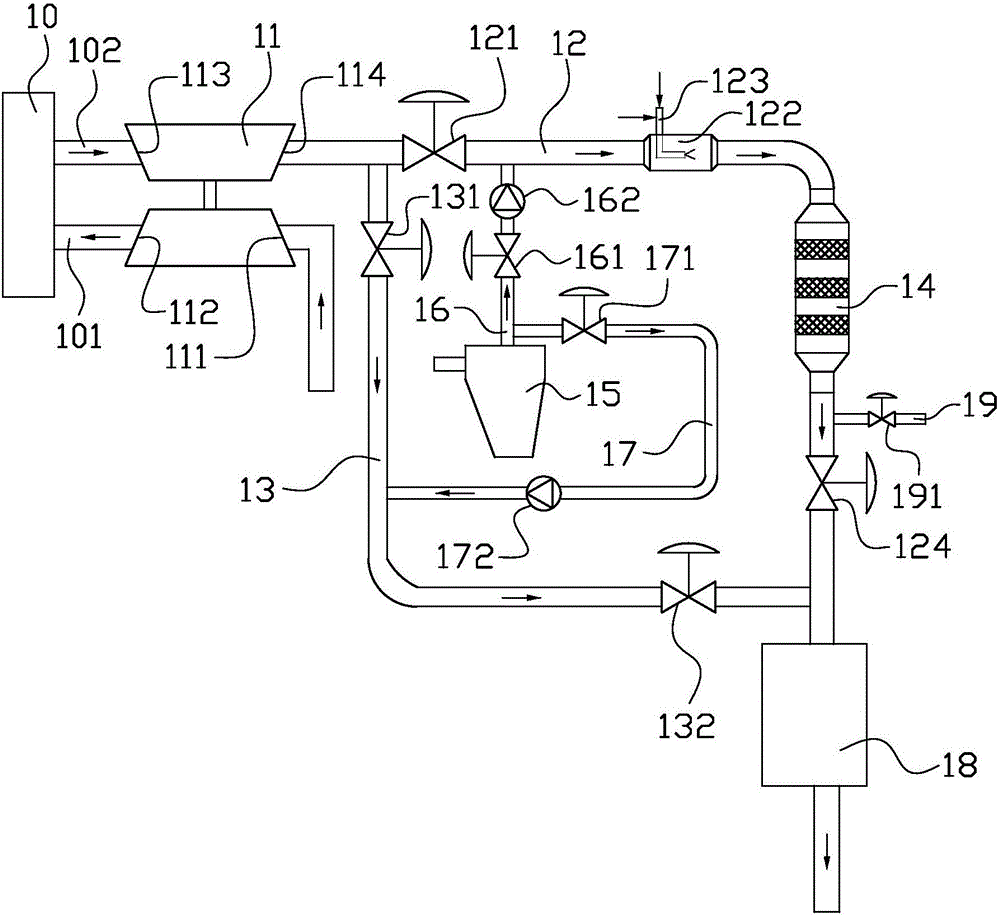Ship exhaust gas denitration system
An exhaust gas and denitration technology, applied in the field of ship exhaust gas denitration system, can solve the problems of increasing energy consumption and cost, exhaust gas polluting the atmosphere, heat loss, etc., to achieve the effect of improving energy utilization efficiency and reducing atmospheric pollution
- Summary
- Abstract
- Description
- Claims
- Application Information
AI Technical Summary
Problems solved by technology
Method used
Image
Examples
Embodiment 1
[0047] For a 72000DWT bulk carrier, the main engine power is 8000kw, and the exhaust gas flow rate is 50000kg / h. The temperature of the diesel engine exhaust gas passing through the turbocharger is 235°C. Using the ship exhaust gas denitrification system of the present invention, the temperature can reach 345°C after being mixed with the exhaust gas from the incinerator, which can meet the temperature required for the SCR reaction. At the same time, compared with using a burner for heating, the fuel consumption (Marine Diesel MDO) is saved by about 20kg / h.
Embodiment 2
[0049] For a 150,000DWT crude oil tanker, the main engine power is 15,000kw, the exhaust gas flow rate is about 130,000kg / h, and the exhaust gas temperature of the diesel engine passing through the turbocharger is 225°C. Using the ship exhaust gas denitrification system of the present invention, the temperature can reach 340°C after being mixed with the exhaust gas from the incinerator. °C, which can meet the temperature required by the SCR reaction. At the same time, compared with using a burner for heating, the fuel saving (Marine Diesel MDO) consumption is about 37.5kg / h.
Embodiment 3
[0051] For a 2000TEU container ship, the main engine power is 17000kw, the exhaust gas flow rate is 150000kg / h, and the exhaust gas temperature of the diesel engine passing through the turbocharger is 230°C. Using the ship exhaust gas denitrification system of the present invention, the temperature can reach 340°C after being mixed with the exhaust gas from the incinerator , which can meet the temperature required for SCR reaction. At the same time, compared with using a burner for heating, the fuel saving (Marine Diesel MDO) consumption is about 41kg / h.
PUM
 Login to View More
Login to View More Abstract
Description
Claims
Application Information
 Login to View More
Login to View More - R&D
- Intellectual Property
- Life Sciences
- Materials
- Tech Scout
- Unparalleled Data Quality
- Higher Quality Content
- 60% Fewer Hallucinations
Browse by: Latest US Patents, China's latest patents, Technical Efficacy Thesaurus, Application Domain, Technology Topic, Popular Technical Reports.
© 2025 PatSnap. All rights reserved.Legal|Privacy policy|Modern Slavery Act Transparency Statement|Sitemap|About US| Contact US: help@patsnap.com

